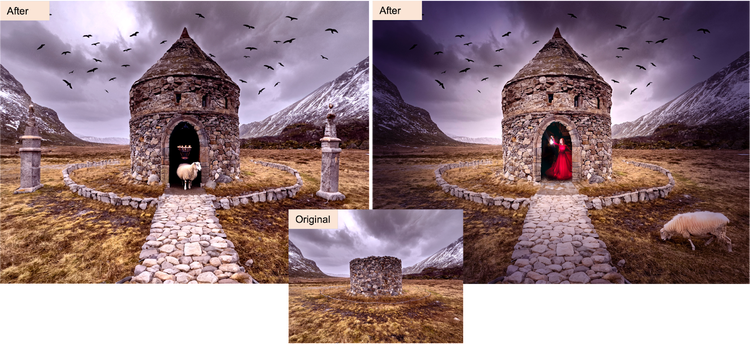After some initial general introductions to how AI-based image generation works, let’s look specifically at how some of the most popular tools work.
1. Midjourney
Midjourney can convert natural language prompts into high-quality images. In some cases, images from Midjourney have even deceived experts in photography and other domains.

Examples range from Pope Francis dressed in a puffer jacket to Trump arrested, both went viral.
Midjourney begins its image generation process by collecting a vast amount of data. This data includes various elements such as color palettes, lighting conditions, textures, and shapes. The algorithm analyzes this data to understand the underlying patterns and relationships. Once the data is collected and analyzed, Midjourney employs sophisticated pattern recognition techniques to identify recurring patterns and features. This step is crucial in generating images that are visually appealing and aligned with human preferences.
Midjourney continuously learns from its previous iterations and user feedback. It adapts its image generation process based on the insights gained, resulting in improved image quality and realism over time. This iterative learning process enables Midjourney to stay at the forefront of image generation technology.
The magic of Midjourney lies in its ability to combine all the gathered information, patterns, and learned features to create unique and visually striking images. The algorithmic magic ensures that the generated images are not only aesthetically pleasing but also aligned with the desired objectives of the users.
2. DALL-E
Introduced in 2021 by OpenaAI, it revolutionized the world of generative AI. This software can turn a simple text description into photorealistic images that have never existed before, or also realistically edit and retouch photos.
Based on a simple natural language description, it can fill in or replace part of an image with AI-generated imagery that blends seamlessly with the original.

Just like humans can combine the concept of armchair and avocado — and concatenate those concepts into one image, so can DALL-E. In fact, it not only understands individual objects, like koala bears and motorcycles, but learns from relationships between objects.
It can take what it learned from a variety of other labeled images and then apply it to a new image.
DALL-E was created by training a neural network on images and their text descriptions. A text prompt is input into a text encoder that is trained to map the prompt to a representation space. A model called the prior maps the text encoding to a corresponding image encoding that captures the semantic information of the prompt contained in the text encoding. Finally, an image decoder stochastically generates an image which is a visual manifestation of this semantic information.
3. Adobe Firefly
Adobe Firefly generates images from texts. This text generation is currently being used to experiment with features such as Generative Fill in Adobe Photoshop.

Generative Fill doesn’t require a pre-existing image to start working. Users can create images in Photoshop using a text prompt; an image will generate and editing can begin from there. It is a new tool that is definitely changing photo editing.
In conclusion, these tools not only showcase the potential of artificial intelligence to create high-quality, realistic images from textual prompts but also demonstrate their adaptability and continual learning processes. Midjourney’s ability to analyze vast amounts of data and learn from user feedback ensures its ongoing improvement in generating visually appealing images. DALL-E’s innovative approach, utilizing text descriptions to create photorealistic images, opens up new possibilities in image editing and synthesis. Similarly, Adobe Firefly’s integration with Photoshop introduces a novel method of image creation directly from textual prompts, streamlining the creative process for users. As these technologies continue to evolve, they promise to redefine the landscape of image generation and manipulation, offering unprecedented opportunities for creativity and expression in various domains.